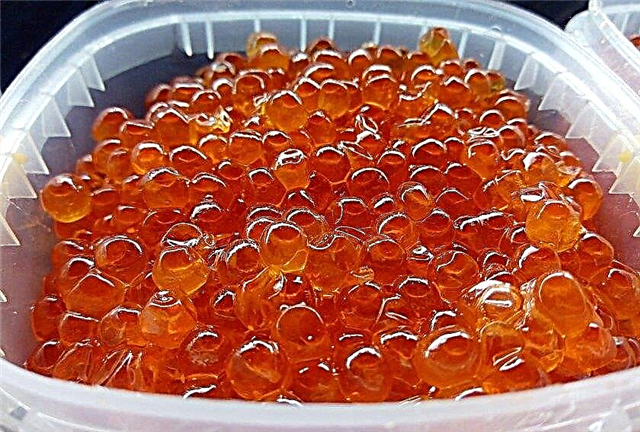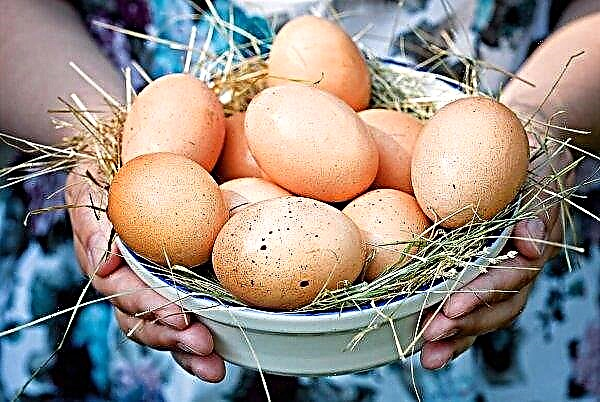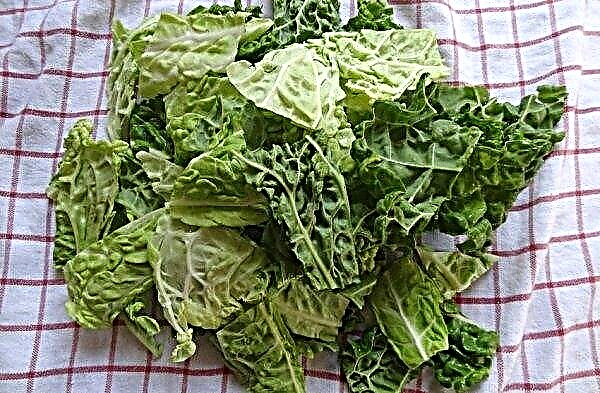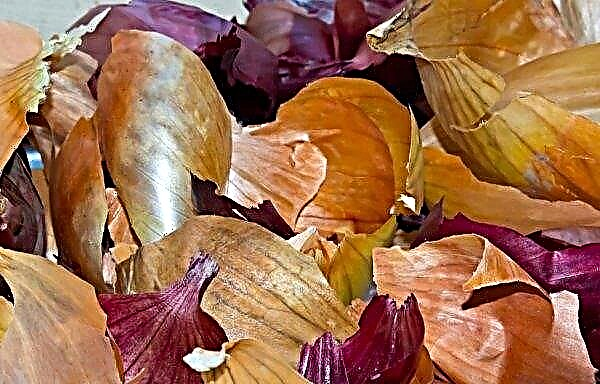Fish eggs are a tasty, healthy and expensive product that is considered luxurious and not too affordable for poor people. If a person is not afraid of high prices, then at present it can be bought without problems. The article is devoted to caviar of chum salmon, pink salmon and sockeye salmon (a family of salmon fish), it will consider what is better and how delicacy products differ from each other.
How to distinguish in appearance
Fish and fish products should be an integral part of the diet of each person, as they are rich in important and necessary nutrients. Caviar is nothing but salty germ of fish, Sturgeon, trout or salmon are considered especially valuable. Until recently, its largest number was produced from fish in the Caspian Sea population.

Caviar of good quality does not stick together in a solid lump, but it should not be too dry. You can define it this way: when shaking, the contents of the jar are not divided into fragments. The product is divided into 1 and 2 grade. The first, often called "Premium", is a raw material from one species of fish and went through salting.
The grains have the same size and color, and are also easily separated from each other. Their taste is homogeneous, has no odors, and the salt content is at the level of 4-6%. The second grade may be a mixture of eggs from different species of fish. The consistency is different (thick or flowing), extraneous flavors are also allowed. The salt content in this product is 4–8%.
Did you know? There are several types of caviar: black, red, gray, gold (Persian sturgeon) and white. The last variety is beluga eggs, which are considered the best in taste and expensive.
What happens red caviar:
- From pink salmon - refers to the most popular. This is due to the fact that of all representatives of the salmon family, this fish is characterized by the highest fecundity. In addition, her taste is versatile and mild, therefore, has the largest number of fans. The better the quality, the smaller the size of each individual egg. Usually one ball reaches a diameter of about 5 mm and is painted in any shade of orange (bright or light).

- From coho salmon - the product "for everybody." This fish produces much smaller grains, with a diameter of not more than 4 mm, they have a burgundy hue and a slightly bitter aftertaste.

- From sockeye salmon - these salmon tosses not too large eggs (with a diameter of 4–4.5 mm) of bright red color. She is highly regarded for her characteristic spicy taste. Unfortunately, the product is not often found on sale due to the excessive, massive catch of this fish.

- Keto - rightly considered the best, it is often called "royal". Balls of a yellow-orange hue have the most characteristic taste for caviar due to the presence of a durable coating. Given the very large size of chum salmon eggs (up to 7 mm in diameter), they are usually used to decorate dishes.

- Atlantic salmon - it is often called an apricot pearl. Appreciated for its perfect shape and golden glitter. Elastic medium-sized grains (4–5 mm in diameter) are excellently stored and have a very delicate taste.

- Trout - refers to an extremely popular variety of the product, painted in yellow or bright orange color, outwardly similar to Atlantic salmon eggs, but has a much smaller size (up to 2 mm).

- Of Chinook Salmon - it can be easily distinguished from other types of caviar. Large balls (6–7 mm) have a deep red color and a bitter, sometimes slightly pungent taste.

Calorie content
The indigenous inhabitants of the North have long been aware of the nutritional value of representatives of the salmon family. Since ancient times, these peoples annually mass-caught fish during its movement for spawning, harvesting not only carcasses, but also caviar.
The crude product was processed so that it could be stored for many months: dried, smoked and salted. In the future, using fish eggs, they prepared various foods (cereals, stews, pemmican), which have the property of saturating a person for a long time.
Did you know? Since time immemorial, caviar has been considered an aphrodisiac. This is true because the product has a high zinc content, which increases the level of libido.
In 100 g of red caviar:
| calories | 264.0 kcal |
| squirrels | 24.6 g |
| fats | 17.19 g |
| saturated fats | 4.06 g |
| monounsaturated fatty acids | 4,631 g |
| polyunsaturated fatty acids | 7.405 g |
| including omega 3 | 6.541 g |
| cholesterol | 588.0 mg |
| carbohydrates | 4.0 g |

Minerals and vitamins (% of the recommended daily intake for an adult):
| potassium | 181.0 mg (5%) |
| sodium | 1500.0 mg (100%) |
| calcium | 275.0 mg (28%) |
| phosphorus | 356.0 mg (51%) |
| iron | 11.88 mg (119%) |
| magnesium | 300.0 mg (75%) |
| zinc | 0.95 mg (9%) |
| copper | 0.11 mg (12%) |
| selenium | 65.5 mcg (119%) |
| B1 | 0.19 mg (15%) |
| B2 | 0.62 mg (48%) |
| niacin | 0.12 mg (1%) |
| B6 | 0.32 mg (25%) |
| folates | 50.0 mcg (13%) |
| B12 | 20.0 mcg (83%) |
| A | 271.0 mcg (30%) |
| E | 1.89 mg (19%) |
| D | 2.9 mcg (19%) |
| K | 0.5 mcg (1%) |
| lutein and zekasanthin | 684 mcg |
Difference in composition
Red caviar is obtained from all varieties of salmon fish. Despite the differences in species, it is equivalent in terms of protein and fat content, as well as in overall nutritional value. The difference lies in the taste, smell, cooking method, as well as in the preferences of a particular consumer. Therefore, it is possible to use any variety of this product with benefit for the body.
Which caviar is more beneficial for the body
All types of red caviar contain a number of vitamins, including A, D and E and minerals (phosphorus, zinc, iodine, magnesium), which have an active effect and have a beneficial effect on the body. Especially fish eggs are recommended for people with skin problems.wishing to improve her appearance and condition, as it has a rejuvenating and firming effect. For this reason, in addition to cooking, the product is widely used in the cosmetic industry for the manufacture of a variety of creams and masks.

Fish eggs are characterized by the presence of a large number of unsaturated fatty acids that support the whole body, including the cardiovascular system, which reduce the risk of blood clots and LDL cholesterol in the blood. Its effect accelerates the cleaning of the liver from toxins, affects the regeneration of the body and cell renewal, helps protect the body from free radicals and relieves stress.
Important! Caviar can be consumed without any restrictions by women who are carrying a baby or are in lactation. This is a valuable source of vitamins and minerals that are extremely important for the development of the child.
Which caviar tastes best
Everyone knows that “there is no companion for the taste and color”. Exactly because of this reason everyone chooses the kind of red caviar that he likes best. Someone likes spicy bitterness and prefers caviar of chinook salmon or coho salmon. Some people like dense and large grains of chum salmon or pink salmon bursting on the tongue.
Any of them is very useful for humans, has an exceptional set of nutrients, minerals and vitamins. Fish eggs can be consumed without any restrictions on the number, but, of course, within reasonable limits, like any other dish.

Which product is more expensive and why
Chum salmon caviar is one of the most expensive delicacies. This is due to the rich taste without an admixture of bitterness and pungency, as well as the large size of orange grains. The eggs of sockeye salmon, fish, the amount of which in nature is rapidly decreasing due to the massive catch of the breed, can also be attributed to this category. A little cheaper, you can buy Atlantic salmon caviar, trout and pink salmon, which do not look so impressive, but taste good and have the same beneficial effect on the body.
Important! It was noted that regular consumption of red caviar affects the reduction of wrinkles on the skin of the face and hands. In this regard, cosmetologists recommend its inclusion in the diet of people who want to look fresh and young.
Red caviar is a useful, but rather expensive product. Therefore, ordinary citizens, most often, buy it only at the festive table in order to diversify the menu with a great taste. Delicacy is used for the preparation of marine team salads, cold fish dishes and sandwiches.



















